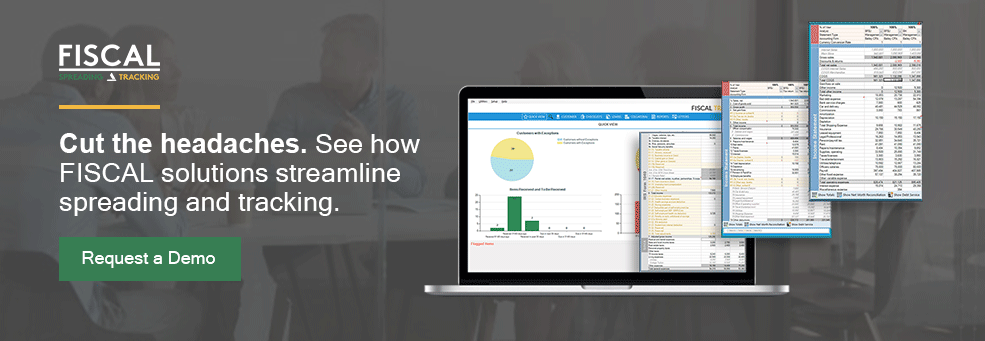Tax returns are an essential tool for analyzing the financial health of a small business and better understanding cash flow. While there is a wealth of information within these forms, tax returns were designed for calculating tax liability, not for spreading. Yet for many community banks and credit unions, tax returns are the best financial information available from their borrowers.
Requiring financial statements instead of tax returns is not much better, as many small businesses today do their own books, or use DIY online software, like Quickbooks, to manage their bookkeeping. This can lead to some non-standard practices or inconsistent documentation, leaving lenders working on a financial puzzle that has missing pieces, an incredibly time-consuming prospect.
4 features to look for in a tax return analysis software
To make tax return analysis more efficient, it helps to build a better process. Before the first number is entered into the spreadsheet, community banks and credit unions should take the time to create a system that helps identify and avoid bottlenecks. Let’s take a more in-depth look at how.
-
Create tax form analysis templates
Different types of businesses use different tax forms. They all contain the same information banks need to perform tax analysis and spreading, it’s just a matter of finding where the information lies on each form and entering the data in your spreading tool.
Instead of having one tax return analysis spreadsheet template for all the different tax forms, credit unions and community banks can save time by creating templates that match each type of tax return form. This eliminates the repetitive task of hunting for the right spot for each data point across three years of tax forms. This issue is exponentially more time consuming when a deal includes multiple related entities.
Start by creating templates for the most common forms. For example, in Tax Year 2021, templates for Forms 1120-S and 1065 would cover 83% of all business returns filed, while the remaining forms combined make up only 17% of returns.
-
Accurately and efficiently capturing cash flow
Just as there are various different tax forms, there are also multiple approaches to entering financial data into a system.
When performing tax return analysis, it’s important to accomplish two distinct goals: 1) capture income and expenses exactly as it appears on the tax return and 2) subsequently make changes, adjustments, and note any exceptions or abnormal items. This can include isolating recurring income and identifying one-time expenses and income. For example, if there is $1 million in income noted on the tax return, but $250,000 of it is from an insurance settlement that is not expected to re-occur, that should be identified and subtracted from the cash flow available for debt service.
These changes should also be noted within the spreadsheet or system, so that when the spreads and analysis is reviewed later or by others, the reasoning for the adjustment is clear.
-
Tax return scanning
Technology has eased the process of tax return analysis for lenders greatly over the years, from spreadsheets and formulas to generating Global Cash Flow and populating Credit Memos. Tax return scanning is a relatively new technology that can save community banks and credit unions hours spent on data entry.
Image recognition “reads” the tax return and auto-populates data into the correct fields within your analysis system. A couple things to consider before onboarding tax return scanning: it is not compatible if your bank does tax return analysis in Excel. It will require additional software with the capabilities to input this type of data. Also, while tax return image recognition can be a huge time saver, much of that efficiency could be lost if your spreading tool lacks a purpose-built system for making and noting adjustments.
-
A right-sized system
When serving small businesses within the community, there are going to be exceptions and adjustments. Community banks and credit unions need a tax return analysis system that has the flexibility to account for the imperfect world of small business financial reporting.
For example, some loan origination systems may require lots of details that are irrelevant or not available. A credit union or community bank may understand why the information is missing or documented elsewhere, but rigid and inflexible systems may determine the process cannot proceed in the software until that information is entered.
When evaluating your tax return analysis process, look for a system that understands that small business lending is different from large commercial lending practices. FISCAL has designed its FISCAL Forward software to provide financial institutions with the flexibility they need, from consistent reports to seamless cash flow adjustments.
To learn more about how FISCAL Forward can meet your bank’s needs: Contact us today.



